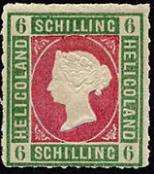Hamburg mark
The Hamburg Mark refers to two distinct currencies issued in the city of Hamburg and used throughout the rest of Germany until 1875:
- The Hamburg Mark Banco, a bank money and an accounting unit, and
- The Hamburg Mark Courant, an actual coin.
| Hamburg mark | |
|---|---|
| Hamburger Mark | |
 32 Schilling coin 1809 | |
| Denominations | |
| Subunit | |
| 1/16 | Schilling |
| Plural | Marks |
| Schilling | Schillings |
| Demographics | |
| User(s) | Hamburg, British Heligoland |

Each mark is divided into 16 schilling, each of 12 pfennig.
Hamburg Mark Banco
The Hamburg Mark Banco was a form of bank money created by the Hamburg Bank in 1619 in order to provide a more reliable medium of exchange in the midst of the monetary chaos of the Kipper und Wipperzeit. It accepted silver of verified weight from customers and credited their accounts with a Reichsthaler equivalent unit called the Hamburg Reichsthaler Banco, equal to 3 Hamburg Marks Banco and which subdivided further as
- 1 Reichsthaler Banco = 3 Marks Banco, each of 16 schillings, or
- 1 Reichsthaler Banco = 2.4 Gulden Banco, each of 20 stuivers / schillings, or
- 1 Reichsthaler Banco = 0.4 Pound Flemish, each of 20 schillings Flemish or 240 grotes Flemish.
This Mark Banco turned out to be one of Europe's most stable currencies. Originally the bank only accepted a limited set of full-weight reichsthalers weighing 25.98 grams at issue, or 1/9th of a Cologne mark or 233.856 grams fine silver. But by 1770 the surviving supply of these coins have been reduced in weight to around 25.4 g. Henceforth the bank has turned to accepting bullion as well as coin, with each Cologne mark of silver bought for 275⁄8 marks banco (95⁄24 thalers, or 25.40 g per thaler) and sold for 273⁄4 marks (91⁄4 thalers, or 25.28 g per thaler).[1]
With the on-going German unification under Prussia's leadership in the mid-19th century, the bank also began to accept Prussian thalers and Vereinsthalers at the rate of 1 Reichsthaler banco = 11⁄2 Vereinsthalers or 25 grams fine silver. With full German unification in 1871 and the introduction of a uniform German gold mark currency in 1873 there was little need for an institution like the Hamburg Bank to verify the value of the currency of a unified Germany. The bank was closed in 1875 with the Reichsthaler Banco or 3 Marks Banco converted to 4.5 gold marks.
Hamburg Mark Courant or Currency
Even with the existence of standardized currency denominated in Reichsthalers and Marks Banco, it was desired to issue coins (or courant) in Northern Germany valued at a fraction of these standard units. Hamburg first issued local currency in 1667 at a tale of 1 Cologne Mark = 10.5 thalers courant = 31.5 marks courant (the Zinnaische standard). In 1690 it then decided to follow the standard of Lübeck issued at a tale of 1 Cologne Mark = 111⁄3 thalers = 34 marks courant. This Hamburg Mark Courant was worth 27.625/34 = 13⁄16th of a Hamburg Mark Banco (or 6.88 g fine silver) and was also divided into 16 schillings courant.[2]
As with the banco currency, Prussian thalers and Vereinsthalers began to be exchanged for 21⁄2 marks courant starting the mid-1850s (thus implying a lower tale of 35 marks courant or 6.68 g fine silver). In 1875 the Hamburg Mark Courant was retired and converted to 1.2 German gold marks.
References
- Shaw, William Arthur (1896). "The History of Currency, 1252-1894: Being an Account of the Gold and Silver Moneys and Monetary Standards of Europe and America, Together with an Examination of the Effects of Currency and Exchange Phenomena on Commercial and National Progress and Well-being".
- Shaw, William Arthur (1896). "The History of Currency, 1252-1894: Being an Account of the Gold and Silver Moneys and Monetary Standards of Europe and America, Together with an Examination of the Effects of Currency and Exchange Phenomena on Commercial and National Progress and Well-being".